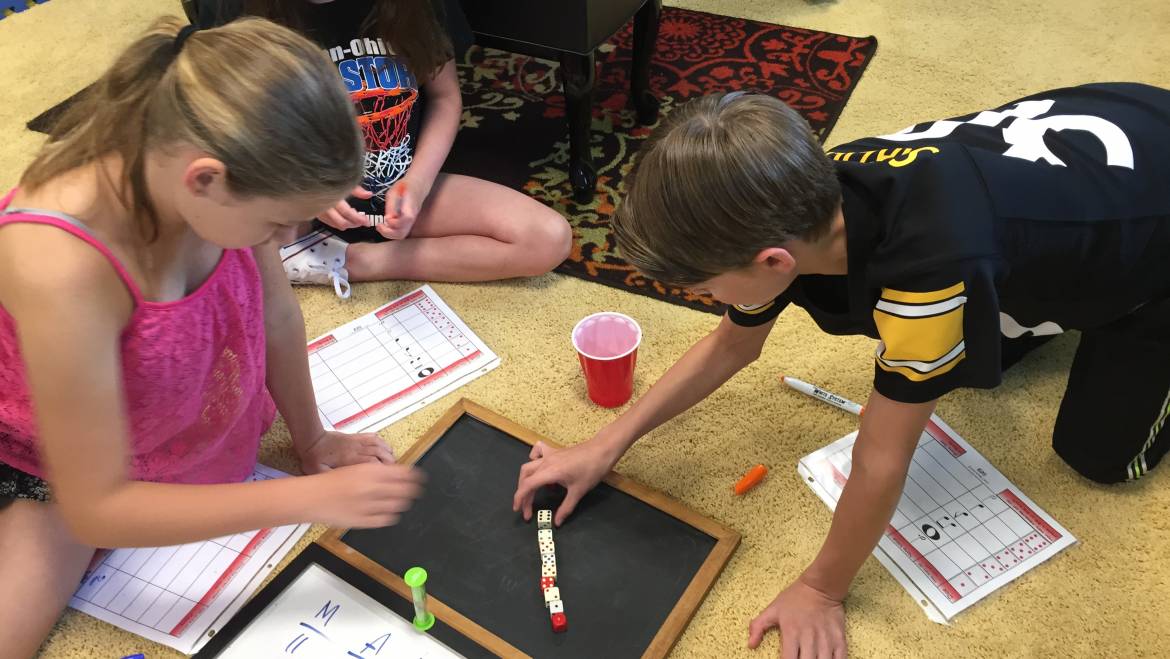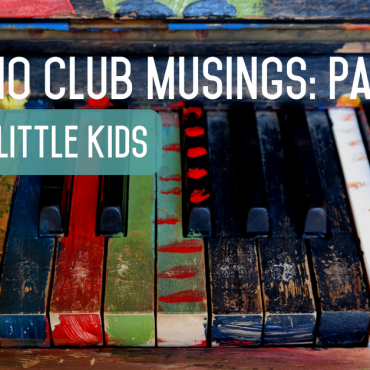Rhythm on a Roll Review
Have you ever struggled with teaching rhythmic values? Who am I kidding — this would probably make a better statement than a question. Let’s try this again:
We all have struggled with teaching rhythmic values at one time or another.

And there’s a good reason for that. Teaching rhythmic relationships can be really tricky! Note names and values don’t always make sense. I bet the following exchange might look familiar…
Teacher: How many beats does the half note get?
Student: Half a beat!
This is where I can really see the value in calling them minims!
Sure, the US system has it’s perks once students can understand that the note names refer to how rhythms fit within a measure of 4/4… but trying to explain that concept to a student who hasn’t learned fractions yet can sometimes be more confusing than helpful.
This is why I’m loving Rhythm on a Roll by Leila Viss of 88 Piano Keys.
Check out how focused my students were during our most recent group lesson:
Here’s how the game works:
Each student gets a different playing card with the same rhythmic values. (There are cards with various levels of note values, but don’t mix them up or it won’t work in a group setting!)
The players roll dice to determine how many quarter notes, eighth notes, etc. they get to draw on their card. Once they draw the notes, they add up the rhythmic value. The student with the highest number wins the round!

My older group used 10 dice and a timer to make things even more challenging.
Teaching Tips for Rhythm on a Roll:
- Play a practice round. Initially I just tried to demonstrate the game, but it wasn’t quite clear to my students. I found it easier to actually walk students through a practice round. Once they understand the order of operations, this game can go quickly!
- All the pictures/videos you see here are of groups, but this game is great for private lessons too. I’ve been using it with all my private students this week as an off-bench activity.
- In a group setting, you can use a small incentive for the winner. 🙂 Stickers, iwako erasers, etc.
- Up the “challenge” by setting a time limit to see who can win the most rounds in X amount of time.
[amazon_link asins=’B014XXP12G’ template=’ProductAd’ store=’sarsmusstu-20′ marketplace=’US’ link_id=’1ff7d044-68ab-11e7-b7e0-23d888512494′]
A Note on Timers: I’ve got a set of sand timers in the studio that I use for for all kinds of games. They’re cheap, they come in a variety of times, and apparently it’s cooler to use a sand timer than an app or a phone. My students think it’s “old school” or something.
Final Thoughts: Two thumbs up for this game! It was a hit with my students (ages 7 to almost 13). Next week I’ll be testing out the harder levels of this game with my older piano club: time to review those pesky 16th notes and rests! I’ll report back here to let you all know how it goes.
 Interested in learning more about Rhythm on a Roll? Click on the image above to view it in Leila’s store, and also see her blog post and Youtube video for detailed instructions about how to play. (P.S. This review was not solicited… I just had to write about it. That’s how awesome this game is.)
Interested in learning more about Rhythm on a Roll? Click on the image above to view it in Leila’s store, and also see her blog post and Youtube video for detailed instructions about how to play. (P.S. This review was not solicited… I just had to write about it. That’s how awesome this game is.)
A word on “piano clubs”: Instead of camps, this year I decided to run small group lessons throughout the summer. We’ve had two meetings for each club, and my students have really enjoyed them so far! Stay tuned for more info about the piano clubs as the summer progresses.





